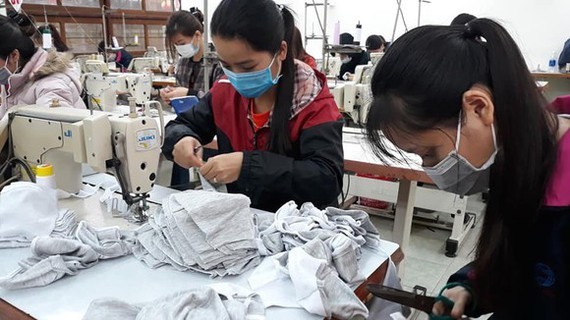
According to Mr. Truong Thanh Hoai, Director of the Industry Agency under the ministry, currently, many enterprises merely have enough materials to maintain the production to March or the beginning of April. After that time, if the Covid-19 continues to prolong, they might halt their production partly or wholly. The sectors that are and will be affected significantly include garment and textile, footwear, and electronics. Because China is not only the consumer market but also the main raw material supplier for these industries. Currently, factories that produce raw materials for Vietnam in China are temporarily pausing their production or operating perfunctorily.
It is forecast that the automobile manufacturing industry might have to halt production due to a shortage of spare parts by the end of the first quarter of this year. Meanwhile, the search for a new supply source in a short time is not simple.
According to Mr. Le Tien Truong, CEO of the Vietnam National Textile and Garment Group (Vinatex), the fever of face masks has raised concerns over a shortage of raw materials. Besides, the unscheduled production of face masks, members of Vinatex have also had to fulfill their export orders. However, many units have to negotiate to extend the delivery time to 2-3 more weeks because of a shortage of raw materials.
According to calculation, a shortage of raw materials in a half month might cause the garment and textile industry to suffer a loss of up to US$2 billion. In the case that enterprises have to halt partly or wholly their operation due to raw material crunch, they have to suffer many cost overruns, such as bank interest, machinery maintenance, and termination pay. Currently, the MoIT has helped enterprises of Vinatex to find alternative sources of raw materials to ensure the production of face masks, but the garment orders still encounter difficulties as the Chinese market is almost paralyzed.
The MoIT also proposed that it is essential to have solutions to encourage and support enterprises to actively seek alternative supply sources of raw materials and encourage enterprises to produce input raw materials by themselves. The State budget needs to focus resources on the development of industrial sectors, especially the supporting industry, concentrating on some key products, including steel, fabric, and new materials to tackle external difficulties; increase outstanding preferential supportive investment policies to attract the shift of investment of manufacturing industries from China to Vietnam.
Not only the industrial sector but in the domestic market, due to the impacts of the disease, the consumption of goods also showed signs of a slowdown. In the first two months of this year, the total retail sales merely grew 8 percent, the lowest level in the past several years.
It is forecast that the automobile manufacturing industry might have to halt production due to a shortage of spare parts by the end of the first quarter of this year. Meanwhile, the search for a new supply source in a short time is not simple.
According to Mr. Le Tien Truong, CEO of the Vietnam National Textile and Garment Group (Vinatex), the fever of face masks has raised concerns over a shortage of raw materials. Besides, the unscheduled production of face masks, members of Vinatex have also had to fulfill their export orders. However, many units have to negotiate to extend the delivery time to 2-3 more weeks because of a shortage of raw materials.
According to calculation, a shortage of raw materials in a half month might cause the garment and textile industry to suffer a loss of up to US$2 billion. In the case that enterprises have to halt partly or wholly their operation due to raw material crunch, they have to suffer many cost overruns, such as bank interest, machinery maintenance, and termination pay. Currently, the MoIT has helped enterprises of Vinatex to find alternative sources of raw materials to ensure the production of face masks, but the garment orders still encounter difficulties as the Chinese market is almost paralyzed.
The MoIT also proposed that it is essential to have solutions to encourage and support enterprises to actively seek alternative supply sources of raw materials and encourage enterprises to produce input raw materials by themselves. The State budget needs to focus resources on the development of industrial sectors, especially the supporting industry, concentrating on some key products, including steel, fabric, and new materials to tackle external difficulties; increase outstanding preferential supportive investment policies to attract the shift of investment of manufacturing industries from China to Vietnam.
Not only the industrial sector but in the domestic market, due to the impacts of the disease, the consumption of goods also showed signs of a slowdown. In the first two months of this year, the total retail sales merely grew 8 percent, the lowest level in the past several years.
























